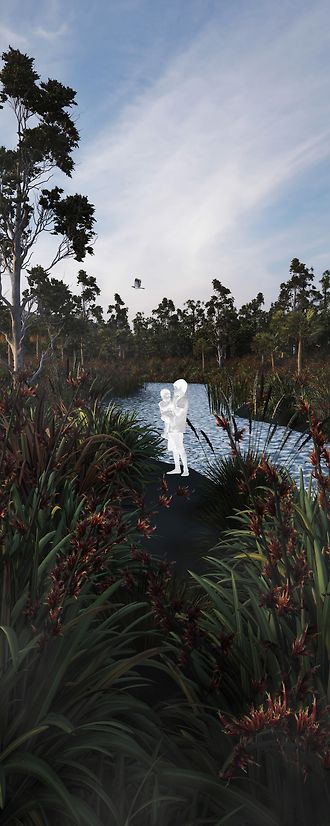Toitanga
Katerina Armstrong (Ngāi Tūhoe, Ngāti Kahungunu, Te Aitanga a Mahaki) Whakapapa o te ngāhere
-
Tauira / Student
Katerina Armstrong (Ngāi Tūhoe, Ngāti Kahungunu, Te Aitanga a Mahaki) -
Kaitautoko / Contributors
Watene Kaihau (Ngāti Raukawa), Vicky Gane, Rhian Salmon -
Kaiako / Lecturers
Jo Bailey, Huhana Smith (Ngāti Tukorehe, Ngāti Raukawa)










Description:
Ko Ranginui kei runga
Ko Papatūānuku kei raro
Ko ngā tāngata kei waenganui
Tihei Mauri Ora!
Kei ngā tupu o te ngahere kei ngā uri o Papatūānuku, tēnā koutou
Kei ngā kaitiaki o Papatūānuku tēnei te mōkai awhina te mihi nei ki a koutou
Ka mihi au ki te pae o Tararua
Ki te awa o Ōtaki e rere kau ana ki te moana nui a Kahe Te Rau o
te Rangi ki te waewae Kāpiti o Tara rāua ko Rangitāne
Tēnei ka mihi ki te rohe pōtae o Ngāti Raukawa ki te Tonga
Ki ngā uri o Mahinārangi rāua ko Turongo, tēnā koutou
Ki a koutou te whare tūpuna kua whakarauika mai hei tautoko
i te kaupapa tēnei te mihi kia koutou
Ki a koutou kua whakarangatira nei i tēnei kaupapa
Tēnei te mihi nui ki a koutou katoa
Hui e
Taiki e!
Ko te Whakapapa o te ngāhere is an explorative discussion and process of understanding ecological and cultural fragmentation through kōrero, hīkoi and spatial design. How can spatial design be used to reveal embedded narratives and activate conversations, while revealing the importance of conserving and reconnecting ngahere through a Te Ao Māori lens?
Over the young colonial history of Aotearoa, rapid deforestation, land alienation and land alteration has significantly changed the whenua (land) and the relationship between tāngata (people), rākau (plants and trees) and the ngāhere (forest) that once cloaked Māori lands. Through a cross-institutional and interdisciplinary collaboration between Te Herenga Waka Centre for Science in Society and Toi Rauwhārangi College of Creative Arts, this project expands ways of communicating the embedded values and relationships between native rākau, tāngata and whenua within the rohe (region) of Ngāti Raukawa ki te Tonga, Ōtaki.
Guided by the overarching principle of whakapapa we acknowledge that this relationship extends beyond rākau to the pre-colonial whenua, dominant with puna wai Māori (freshwater systems) and kōreporepo ngāhere (swamp forest). Out of the process of centering whanaungatanga, hīkoi and kōrero of past and future visions arose the spatial design themes of 3D visualisation, immersion and experience. These forms have come together through an installation that will guide people through an immersive visual karakia that expresses whakapapa and mauri, preceding a series of visualisations that represent three familiar sites within Ōtaki that connect wai and rākau. The purpose is to evoke people to whakarongo (listen and feel) and kōrero (discuss).